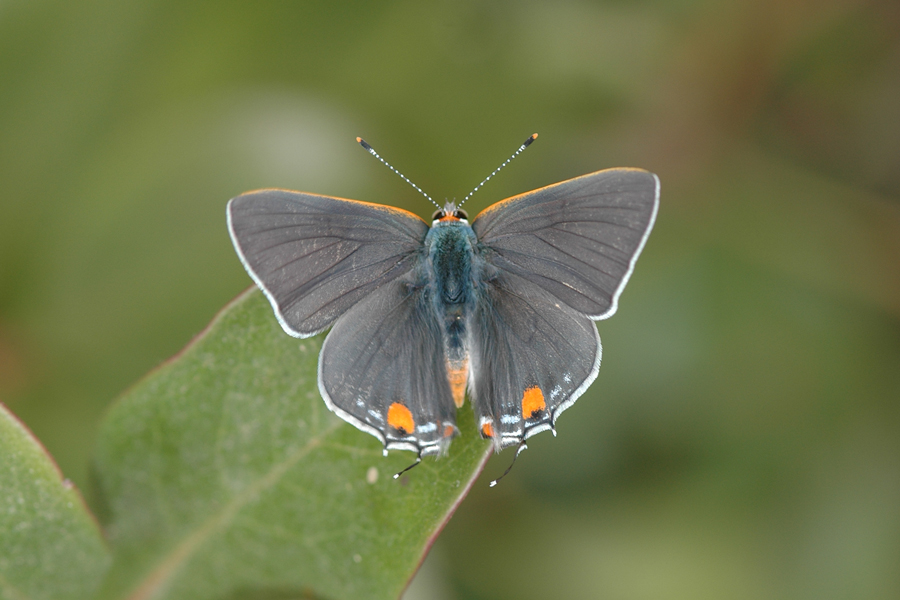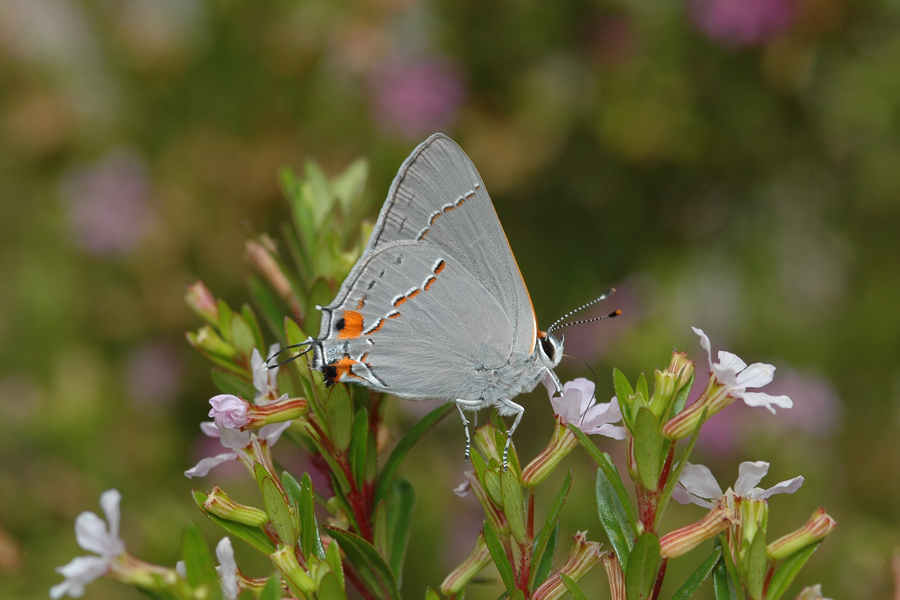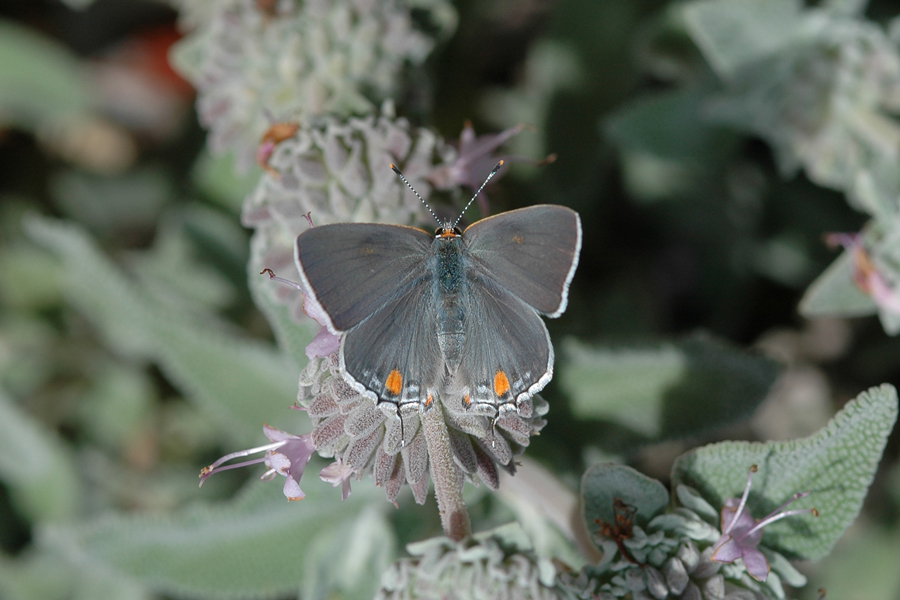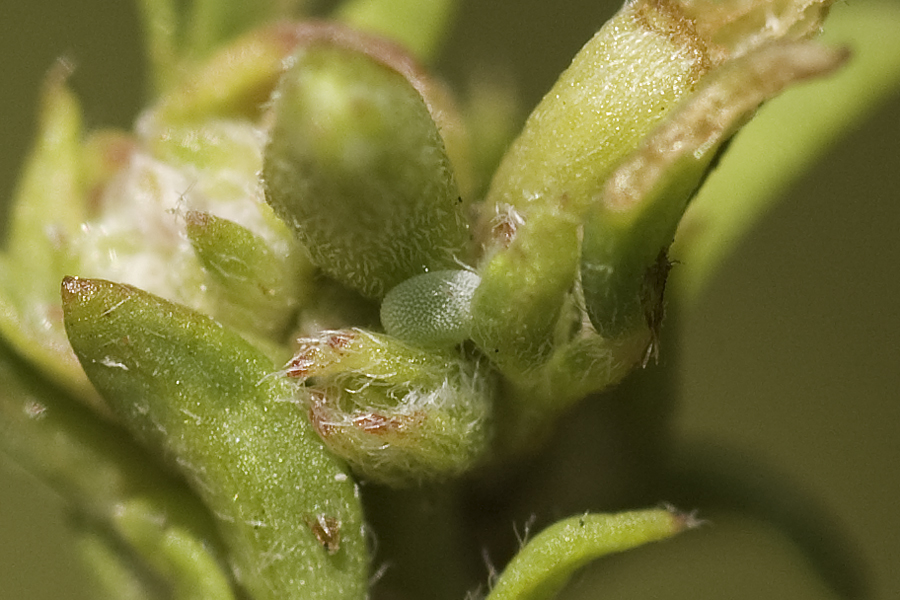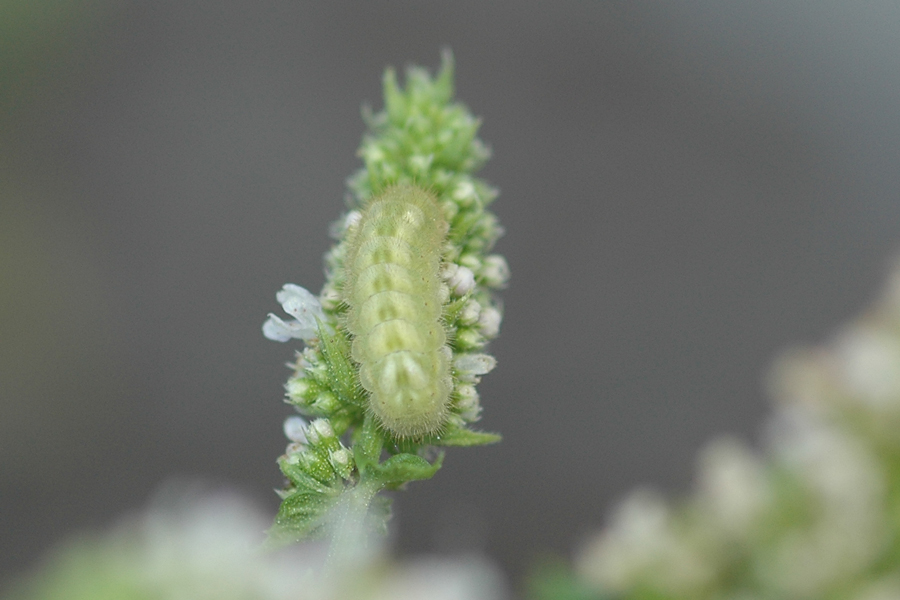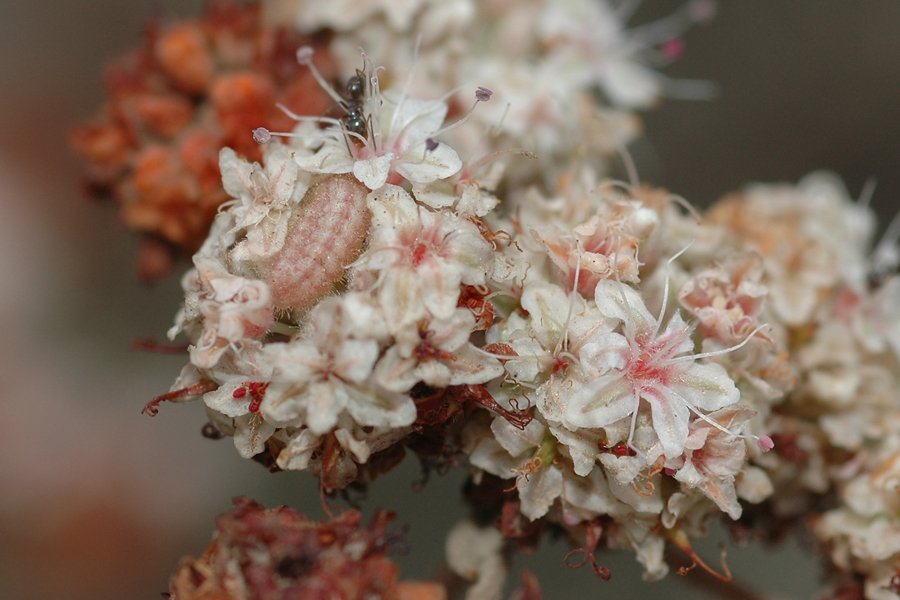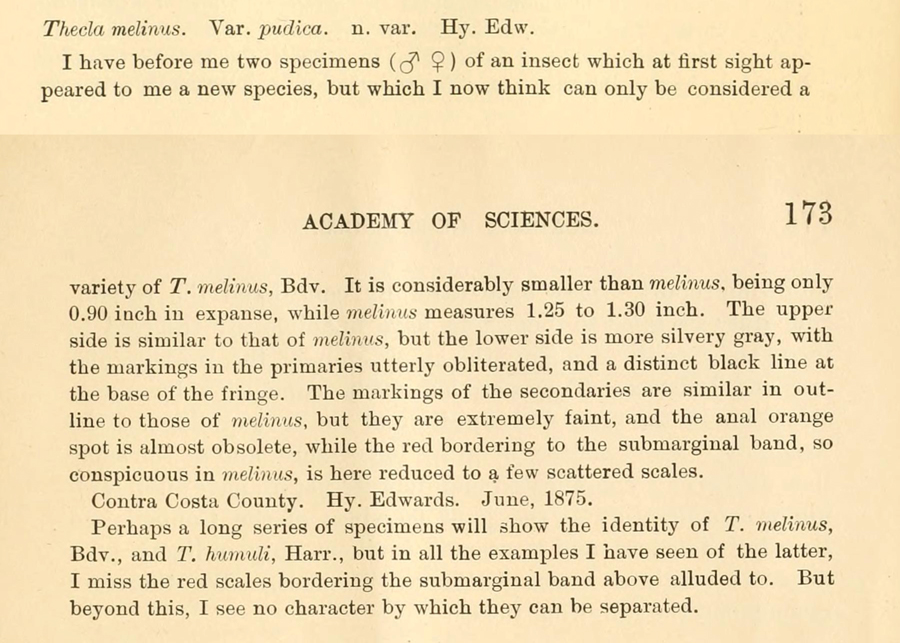Strymon melinus pudica
Gray Hairstreak
Gray hairstreaks can be found throughout North America down to the northern end of South America, using a wide variety of plants across many families for larval food. The subspecies pudica ("common") is in California and Baja California. In my yard, it will use mint, deerweed, California buckwheat, possibly plumbago, and no doubt others. Older books and articles often called this the "common hairstreak", and used "gray hairstreak" for what we now call the mountain mahogany hairstreak.
Male gray hairstreak, Strymon melinus pudica, in my garden, Long Beach, August 14, 2005. Note the orange on the abdomen, which distinguishes the males from females.
Another in the garden, Long Beach, August 14, 2005. These were once called "common hairstreaks".
Female gray hairstreak, March 4, 2006 in my garden. Females lack orange on the abdomen that males have.
A gray hairstreak was ovipositing on deerweed - Acmispon glaber - in my garden on June 19, 2011, and this is one of the tiny, bluish-green eggs I was able to photograph.
Larva of gray hairstreak on a mint blossom in my yard, Long Beach, August 31, 2009.
Larva on California buckwheat, Colton, San Bernardino Co., October 15, 2007. Caterpillars are often green, but they can also be whitish, pink or red, making them cryptic as in this photo. They are often tended by ants.
Henry Edwards described subspecies pudica in 1877 in Proceedings of the California Academy of Sciences.
©Dennis Walker
